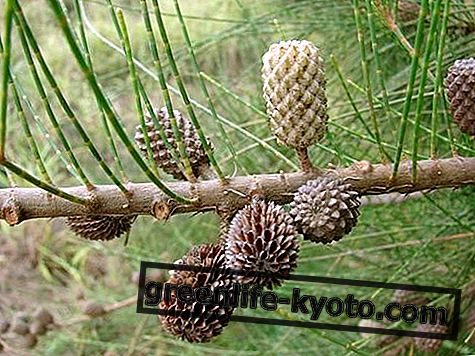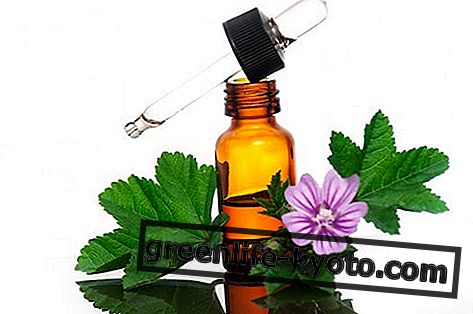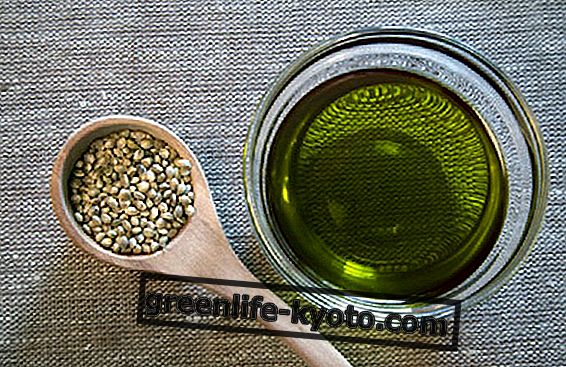Curated by Cinzia Zedda, an Iridology Naturopath
Pain and inflammation can be fought at the table. There are naturally occurring foods which, due to their properties and actions, act as real drugs without having the contraindications that generally characterize the latter. Let's find out what these foods are.
>
>
>
>
Flaxseed oil among anti-inflammatory foods

Combat inflammation at the table
The percentage of people suffering from various types of inflammation and pain is very high. Sometimes these conditions are so extreme as to be incapacitating . For this reason and for the hurry to rightly find some relief and well-being, recourse is given to the use of synthetic anti-inflammatories (drugs).
The treatment with the emergency drug can be useful but generally the people who resort to this solution do it in a recurring and habitual way causing addiction and worsening the general conditions of the organism. The synthetic anti-inflammatory in fact acts directly on the stomach ( irritating its mucous membrane and inhibiting the action of prostaglandins) while the liver has the tiring bulk of eliminating the load.
In the long run this whole mechanism can only harm the organism that does not function as a "compartment compartment" but works in a " team ". This means that the kidneys and intestines can also be damaged in the tail.
This is why it is always good to prevent one's own arm in order to avoid resorting to solutions that immediately relieve us of inflammation but which, on the other hand, damage us even more.
As often happens , nutrition comes to us giving us excellent alternatives to the traditional drug. As already mentioned, there are foods that have wonderful anti-inflammatory characteristics. Some of these foods can be introduced daily into our diet as preventive agents for the parts of the body that are most vulnerable and easy to inflammation.
Having said this, we must also pay attention to the elimination of foods that can instead increase it . A tissue or a body district can become inflamed due to mechanical, chemical and biological causes. This is why it is good to observe one's body and its reactions in order to intervene promptly, preventing a chronic inflammation with its consequences.
Foods to avoid
Some foods contain a particular acid called arachidonic acid with markedly pro-inflammatory activity on the body. These foods are meat and eggs, peanuts and dairy products (cheese) .
Arachidonic acid is synthesized in the body through linoleic acid. This is extremely useful information because it makes us better understand the importance in the choice of oils and fats especially in packaged bakery products but also in those of artisan production.
Keep in mind that arachidonic acid is concentrated in particular in the nervous system and in muscle tissue. To be clear this acid is not only inflammatory but it is also useful to the extent that the organism produces it (for example we find it in breast milk for the development of the fetus) while it is to be underlined that an excessive entry through the food makes it harmful, precisely pro-inflammatory.
This action is involved in atherosclerosis, rheumatoid arthritis, psoriasis and some other autoimmune diseases. A food correction, therefore, that regulates the excess intake of this acid is undoubtedly useful.
We can therefore say that the "enemy foods" (inflammatory action) are sugars and refined carbohydrates (wheat or wheat), meats and cheeses, packaged foods, glutamate and some particular food combinations (the omega 6 association is not correct with foods that raise insulin such as the dolcino at the end of a meal), preservatives, additives and even though we are not food, we also consider stress .
Anti-inflammatory foods
Nature offers a wide range of anti-inflammatory foods . In general, a diet that includes fresh and seasonal fruits and vegetables and whole foods can already do a lot.
However, other foods contain substances or active ingredients that act in a targeted manner. Most synthetic drugs (for any use) arise from a careful scientific examination aimed at the plants in question. The digital that is a famous drug for the care of the heart (cardiocinetico) is a clear example of it as it is also the aspirin and many others still. Even the powerful action of some herbs has forbidden the ministry of health to use and market them and then update the dosages and methods of use.
The omega three (blue fish and some nuts) also come back to our table. Their action on the oxygenase cycle (cox) reduces inflammation.
You can also explore all the foods that contain omega 3

The combination of health and extra virgin olive oil is now known and is one of the jewels of our Mediterranean cuisine thanks to its many virtues. Nevertheless, linseed oil and hemp oil are less used but have risen to prominence in recent years thanks to new favorable discoveries regarding their use in daily nutrition.
Linen is particularly appreciated for the health of the intestine and finds satisfaction even for the creation of excellent culinary recipes. Hemp is also found in the form of pasta, oil and paté (a valid alternative to unhealthy sauces and gravies to spread on bread or to add to first courses and second courses with vegetables). Hemp contains good amounts of noble proteins and B, C, PP and mineral vitamins such as iron, magnesium, calcium and potassium, all useful elements especially in those who adopt a vegan or vegetarian regime. So it is a panacea for the nervous system and for cardiovascular problems (cholesterol), skin and bronchial problems.
Rice has excellent flaming and regulating properties. It is "refreshing" and has a good detoxifying action and fights hypertension . Everyone generally likes it and is a great alternative for those who cannot eat gluten-containing cereals.
Red fruits are a concentrate of polyphenols, substances that help us fight free radicals. They also have a good vitamin content and in particular vitamin C and A. In general they support the body with purifying, disinfectant, astringent and antioxidant activities.
Green tea has a good antioxidant power and is useful in low-calorie diets. It regulates pressure and improves circulation and is cholesterol-friendly.
The anti-inflammatory properties of pineapple are well known by women. Pineapple fights inflammation locally (cellulite) and edema by improving water retention. It is rich in vitamin C and minerals like potassium and calcium.
Treating inflammation in herbal medicine
Boswellia serrata, spirea and clay such as blackcurrant and blueberry are just some of the infinite possibilities that can better manage inflammation with natural anti-inflammatories .
Acting promptly in the initial stage increases the success of the treatment in a short time and successfully without having to resort to heavier therapies. Moreover, for those who are forced to perform repetitively the same movement as in the case of the athlete or those who work by performing routine movements (perhaps incorrect and perpetrated over time), they are more likely to inflame the joint or the muscle.
In these cases it is possible to act both at postural level with osteopathic techniques and by intervening with the application of local and targeted creams whose components are natural and based on camphor to warm the devil's muscle and claw for inflammation. The clay is excellent for local flare (wraps) and for internal use. In this latter case, the mucous membranes of the stomach are beneficial.
Anti-inflammatory drinking recipes
tisane
Boil the water, turn off and pour the water into a "tisaniera" or a cup with a strainer filter. Add a piece of grated or powdered ginger root and add the juice of half a fresh lemon and a coffee spoon. of turmeric.You can sweeten with honey or stevia.Colate and drink hot.
Beneficial tea
Bring the water to a boil and add a spoonful of green tea. Add lemon zest, a teaspoon of nettle dioica and a pinch of ginger. Filter and drink in the morning and after lunch.












